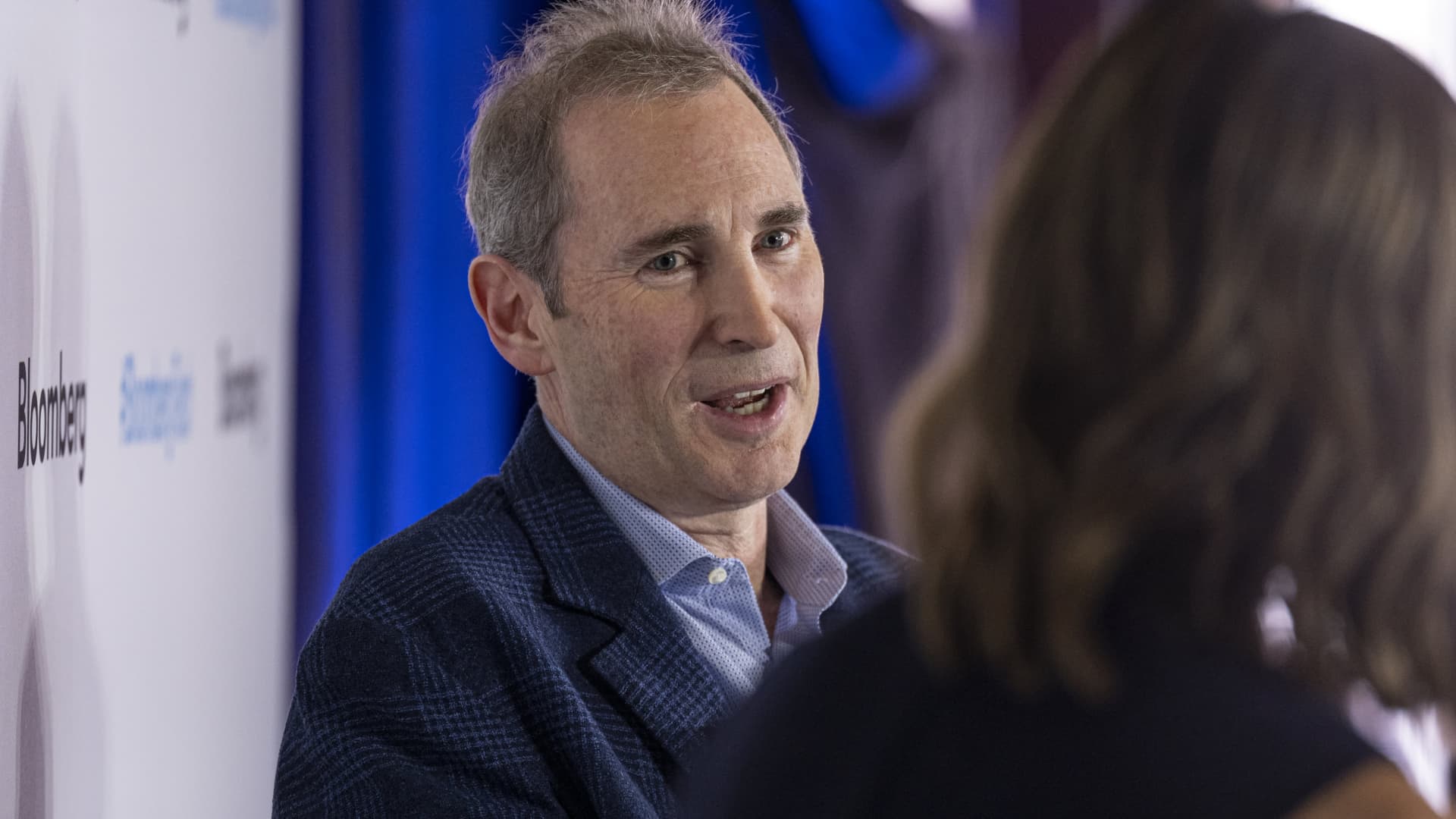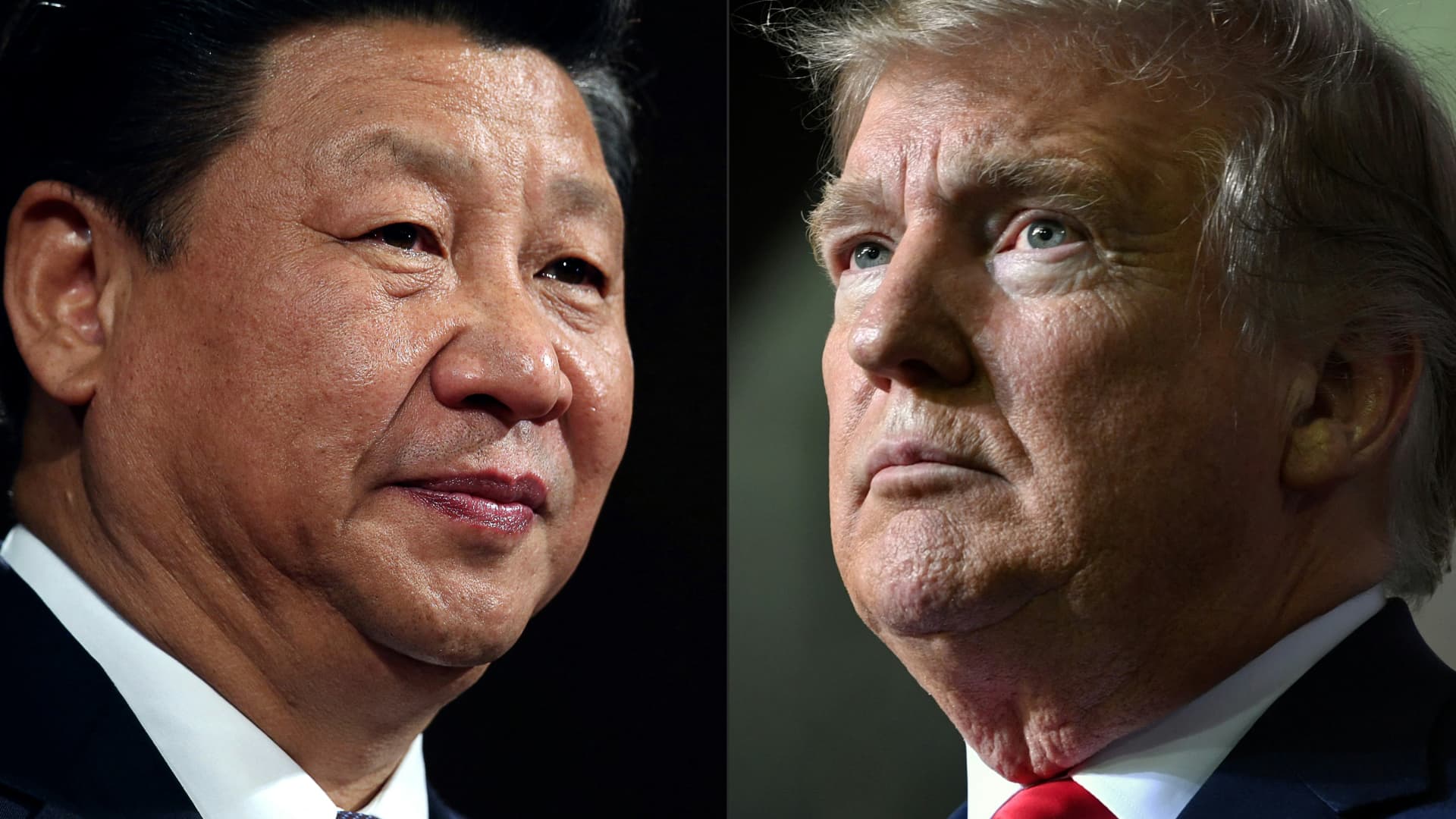Amazon reported better-than-expected earnings and revenue for the fourth quarter, but it gave disappointing guidance for the current period. The stock slipped more than 5% in extended trading.
Here’s what the company reported compared with what Wall Street was expecting:
- Earnings per share: $1.86 vs. $1.49 expected, according to LSEG
- Revenue: $187.79 billion vs. $187.30 billion expected, according to LSEG
Wall Street is also looking at these key revenue numbers:
- Amazon Web Services: $28.8 billion vs. $28.8 billion, according to StreetAccount
- Advertising: $17.3 billion vs. $17.4 billion, according to StreetAccount
Amazon expects sales this quarter to be between $151 billion and $155.5 billion, the company said. Analysts were expecting $158.5 billion, according to LSEG.
“This guidance anticipates an unusually large, unfavorable impact” from foreign exchange rates, the company said. The impact amounts to $2.1 billion, or 1.5%, Amazon said.
The U.S. dollar index — which measures the greenback against a basket of rivals — hit its highest level in more than two years last month, ahead of President Donald Trump’s inauguration. The dollar climbed steadily from late November through mid-January and has since fallen slightly.
Based on Amazon’s forecast, the company expects revenue growth of only 5% to 9% in the first quarter. At the low end of the range, that would mark the slowest growth on record. Amazon went public in 1997.
Revenue in the fourth quarter rose 10% from $170 billion in the same quarter a year earlier.
Net income almost doubled to $20 billion, or $1.86 per share, from $10.6 billion, or $1 a share, a year ago. Amazon CEO Andy Jassy has been on a cost-cutting campaign since late 2022. The company laid off more than 27,000 corporate employees in 2022 and 2023. Job cuts continued in 2024 and have stretched into this year.
Amazon has been able to bolster profits by trimming expenses and through continued strength in the high-margin cloud business. Amazon’s operating margin, the profit left after accounting for costs to run the business, climbed to 11.3% in the period from 11% in the prior quarter and 7.8% in the fourth quarter of 2023.
Sales in Amazon’s cloud division were a hair below consensus estimates, but grew faster than the same quarter last year. Revenue increased 19% during the quarter compared with 13% growth a year ago. AWS still isn’t growing as quickly as its competitors. Revenue from Azure and other cloud services at Microsoft rose 31%. Alphabet’s cloud revenue was up 30%.
Amazon’s capital expenditures totaled $27.8 billion during the quarter, compared with $14.6 billion a year ago. The company has been pumping billions of dollars into data centers and equipment such as Nvidia processors to power its artificial intelligence products. The company is responding to increased competition in generative AI from rivals including OpenAI’s ChatGPT, Google’s Gemini and Microsoft’s Copilot, as well as AI startup Anthropic, which counts Amazon among its investors.
Amazon CFO Brian Olsavsky said the company expects to boost capital expenditures to $100 billion in 2025, up from spending of roughly $83 billion in 2024. Olsavsky said the jump in spending “primarily relates to AWS, including to support demand for our AI services, as well as tech infrastructure to support our North America and international segments.”
Jassy highlighted the company’s AI investments in the earnings release, including a new set of AI models, called Nova, and its homegrown Trainium chips.
“These benefits are often realized by customers (and the business) several months down the road, but these are substantial enablers in this emerging technology environment and we’re excited to see what customers build,” Jassy said in a statement.
Tech companies are under greater pressure from investors to prove their big AI spending is worthwhile, especially following the launch of Chinese startup DeepSeek’s R1 model. DeepSeek claims it took only two months and less than $6 million to develop R1, which it says rivals OpenAI’s o1. The announcement caught Wall Street and Silicon Valley by surprise, challenging the assumption that tech companies must spend heavily on chips and data centers in order to build cutting-edge AI models.
Advertising revenue increased 18% to $17.3 billion, as brands continue to spend heavily for prominent positioning on Amazon’s app. In recent years, Amazon has emerged as one of the top digital ad companies, behind only Alphabet and Meta in the U.S.
As of Thursday’s close, Amazon shares were up 9% for the year. They rose 44% in 2024, topping the Nasdaq, which gained 29%.
WATCH: Amazon’s Jamil Ghani on Prime’s 2024 performance











